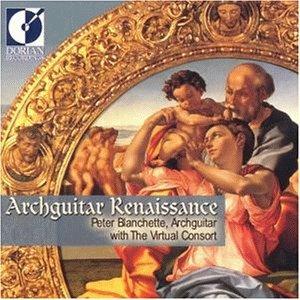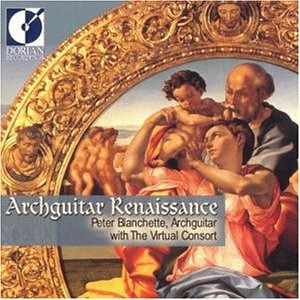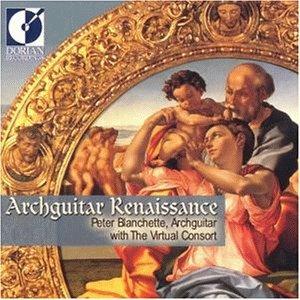Archguitar Renaissance
Thomas Mace, author of the 1676 treatise "Musick's Monument," preffered adjectives to accuracy and decorated his prose with terrible verse. Describing a trip to Italy, he mentions seeing "lutes, archlutes, guitars and archguitars." "By archguitar, he probably meant the chitarrone, which is basically a big guitar," says Peter Blanchette. "No musician I know ever heard of an archguitar. So I co-opted the name." Blanchette grew up playing electric guitar in the Boston area, but a Julian Bream concert changed his life. He switched to lute and guitar, but felt frustrated by the limitations of both. He wished for more bass notes on the guitar, and it wouldn't hurt if they were fretted, as on the softer-sounding lute. He worked with guitar maker Walter Stanul on putting a playable form to these ideas, and in 1982 the new instrument was born. "For the first five or six years I played it, people would ask me what the heck it was. Eventually, I came up with 'archguitar.'" Now all the expanded-range instruments that Walter Stanul built for Blanchette and the others who play them are called archguitars. - Byron Nilsson
-
Supporto:CD Audio
-
Numero supporti:1
-
Etichetta:
Disco 1
Le schede prodotto sono aggiornate in conformità al Regolamento UE 988/2023. Laddove ci fossero taluni dati non disponibili per ragioni indipendenti da Feltrinelli, vi informiamo che stiamo compiendo ogni ragionevole sforzo per inserirli. Vi invitiamo a controllare periodicamente il sito www.lafeltrinelli.it per eventuali novità e aggiornamenti.
Per le vendite di prodotti da terze parti, ciascun venditore si assume la piena e diretta responsabilità per la commercializzazione del prodotto e per la sua conformità al Regolamento UE 988/2023, nonché alle normative nazionali ed europee vigenti.
Per informazioni sulla sicurezza dei prodotti, contattare productsafety@feltrinelli.it



